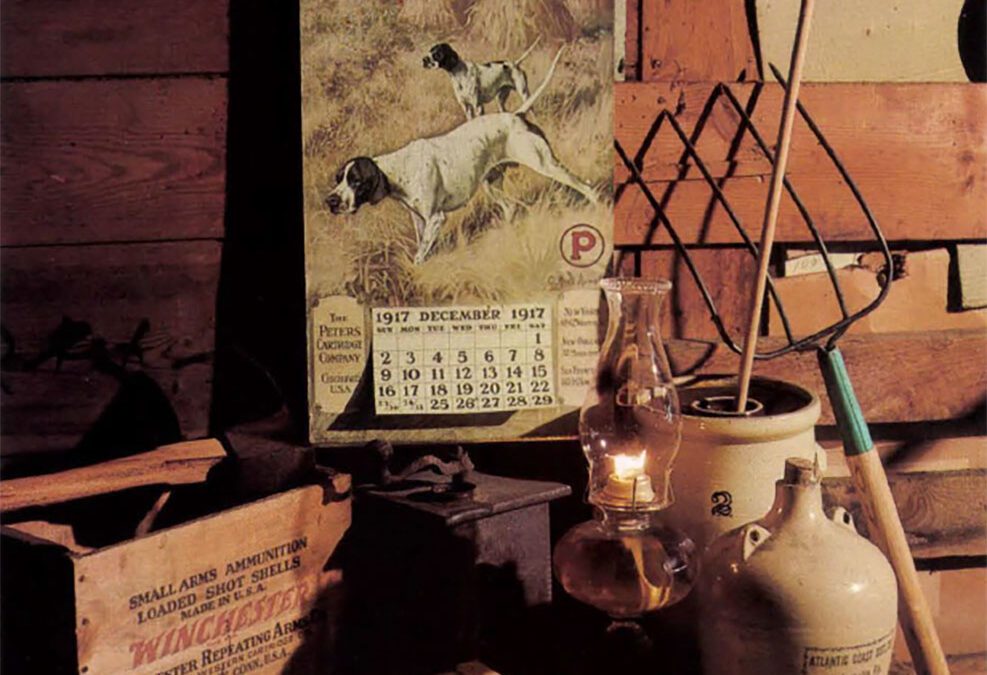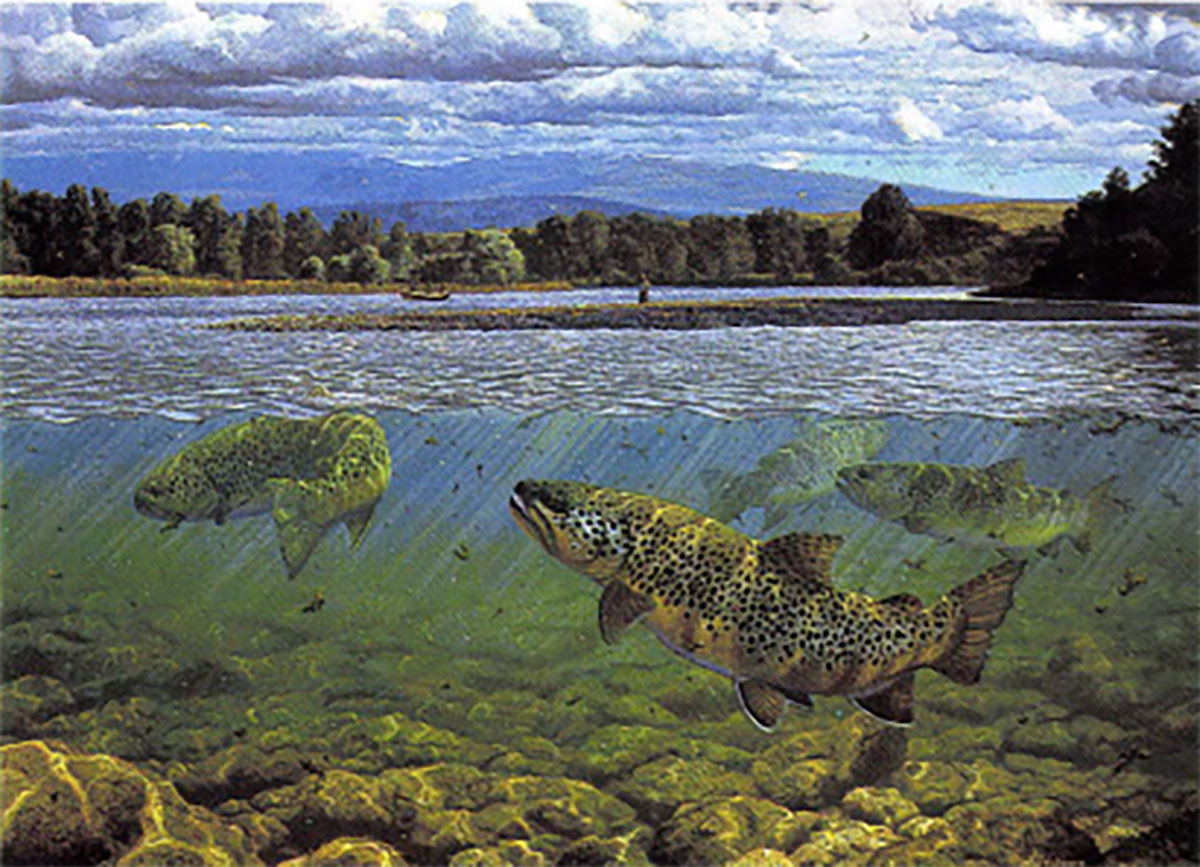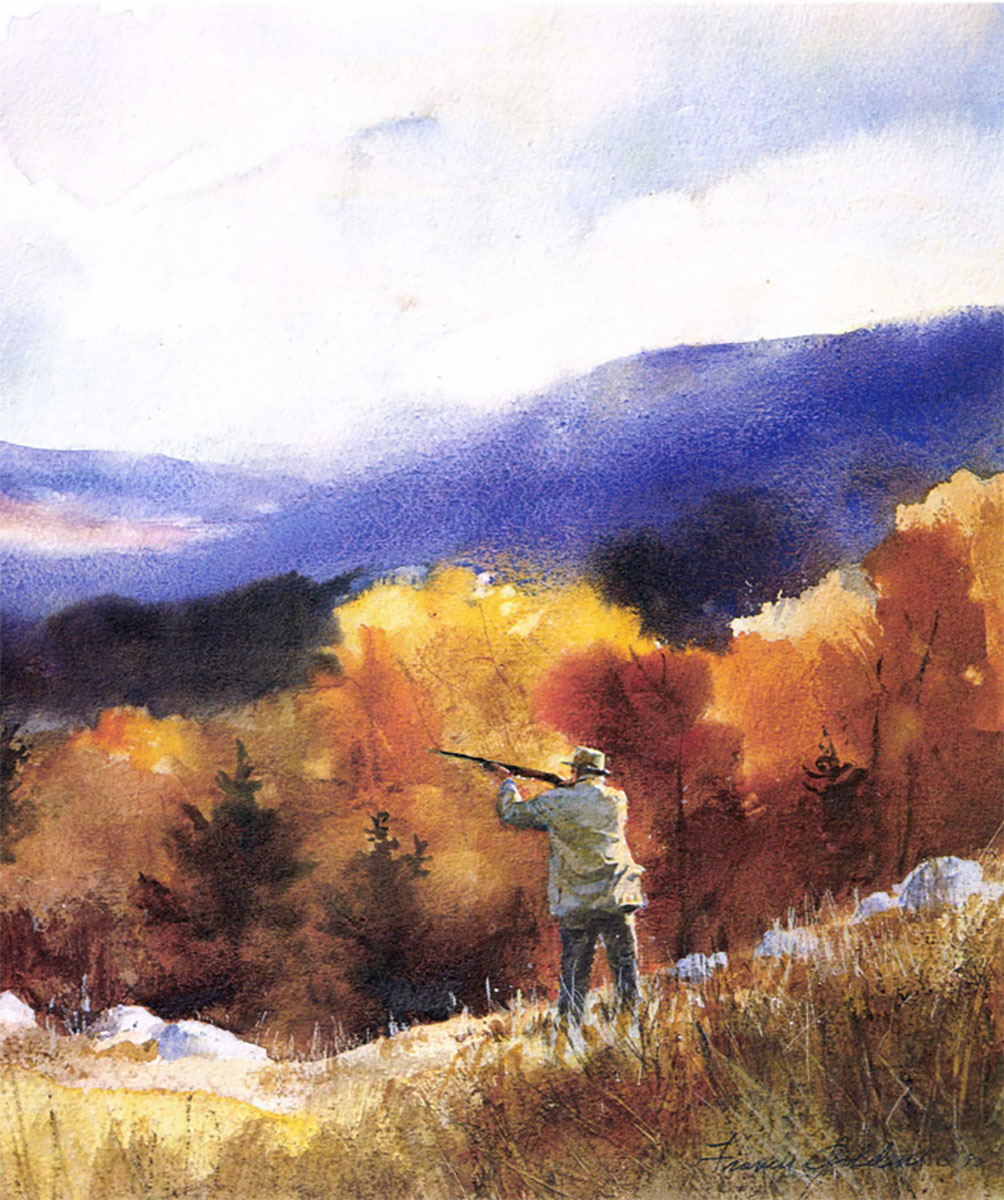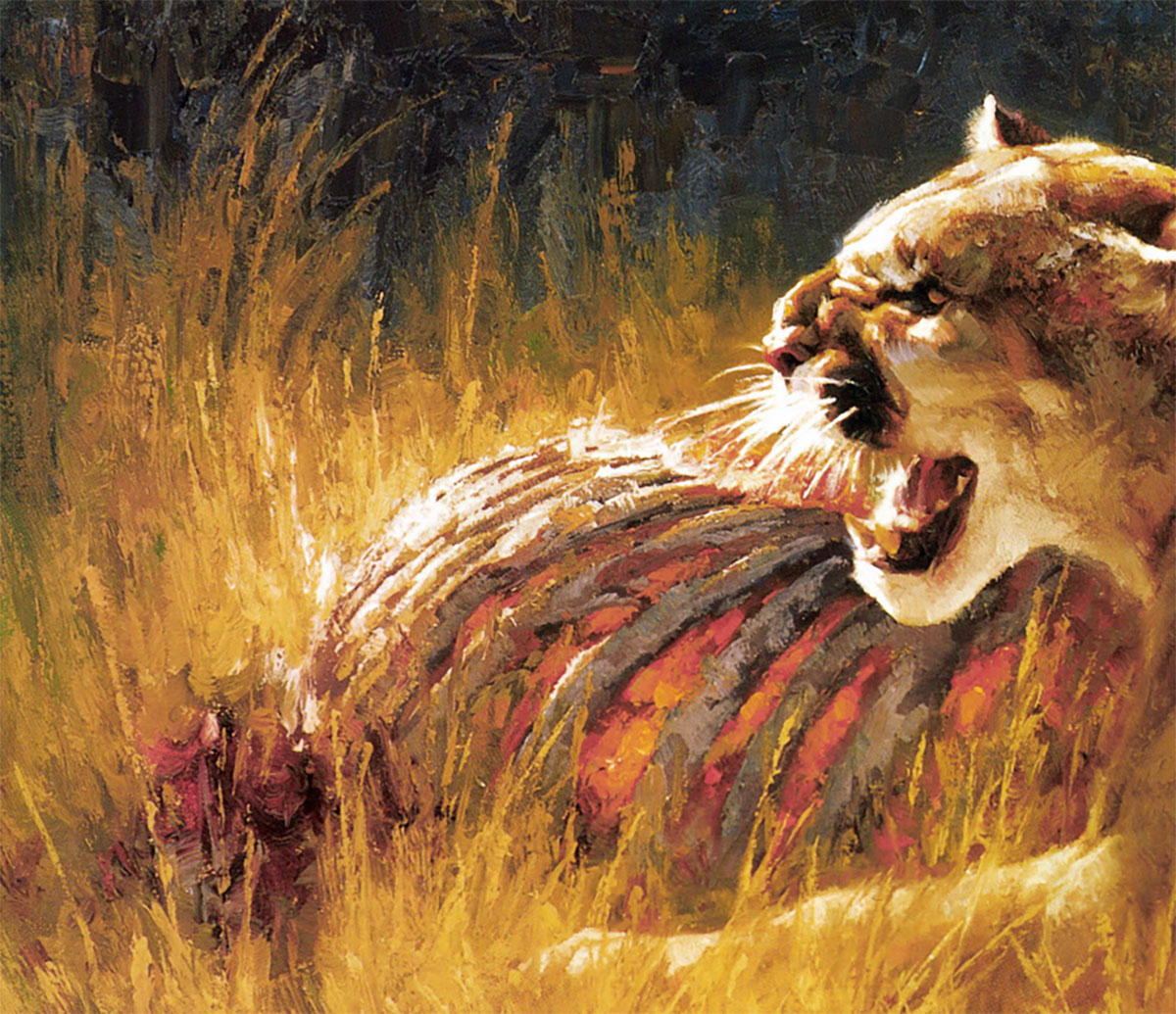By definition and design, the calendar marks the passage of time and to an extent sets the tempo for our activities. But the calendar holds particular interest for the outdoor sportsman, the hunter and the collector of sporting art.

Harrington & Richardson’s 1909 calendar features the nostalgic painting of an unknown artist.
The calendars of the late 19th and early 20th centuries provided a prime advertising medium for arms and ammunition manufacturers. By combining. Hunting scene painted by a major wildlife artist of the period with their advertising message on a calendar, they were able to attract interest in their products as well as in the calendars themselves.
The first of these sporting art calendars was published by the Winchester Repeating Arms Company around 1887 and was distributed to gun dealers and hunters. For some 40 years thereafter, such calendars were permanent fixtures in the general merchandise and hardware stores throughout the country.
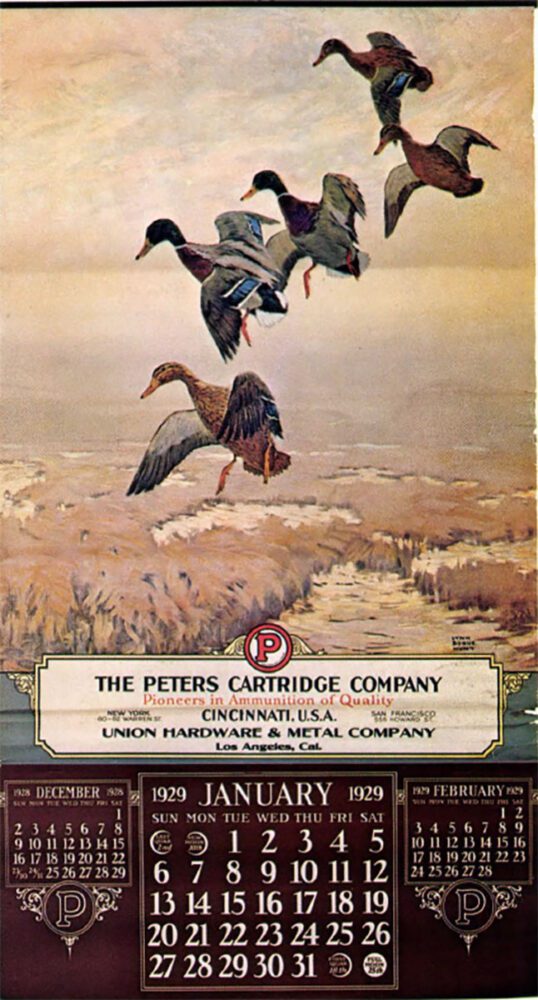
Peters 1929 calendar featured artwork by Lynn Bogue Hunt, a well-known and prolific painter of birds, and a friend of Ernest Hemingway.
Hunting club members sought the calendars to decorate the hunting lodge walls, while youngsters who dreamed of that first shotgun or rifle would beg store owners to save the old calendars for them. If the calendars were hard to come by while they were still being published, they are as scarce these days as a black-footed ferret on Main Street.
“The calendars exemplify a type of folk art which has captured a small but enthusiastic group of collectors,” said Bill Bramlett of Florence, who collects the calendars, posters and advertising envelopes of the old arms and ammunition companies.
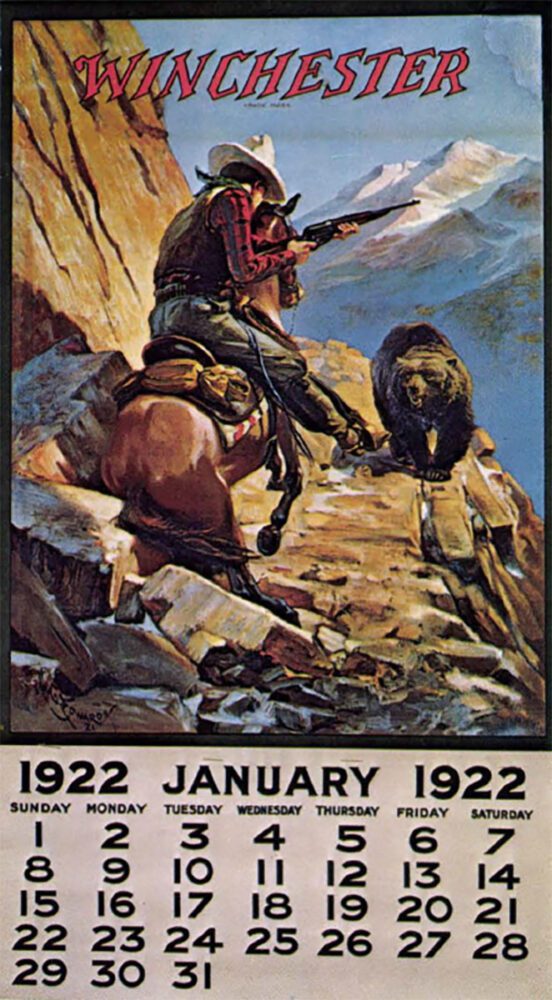
H. G. Edwards produced a classic cowboy calendar for Winchester in 1922, showing a Winchester 1895 carbine.
Bramlett noted that “there is a unique aspect to the cultural history of America to be found in wildlife art and firearms advertising. One can trace in this art the development of sports clothing and other equipment as well as improvements in design — waterproof shells, automatic and hammerless action arms.”
It was definitely prior to widespread women’s lib. Since the woman’s place was thought by most to be in the home, only one out of a hundred calendars depict women hunting. This ratio may have improved in later years, but not significantly; the sport of hunting at that time was almost exclusively regarded as a man’s game.
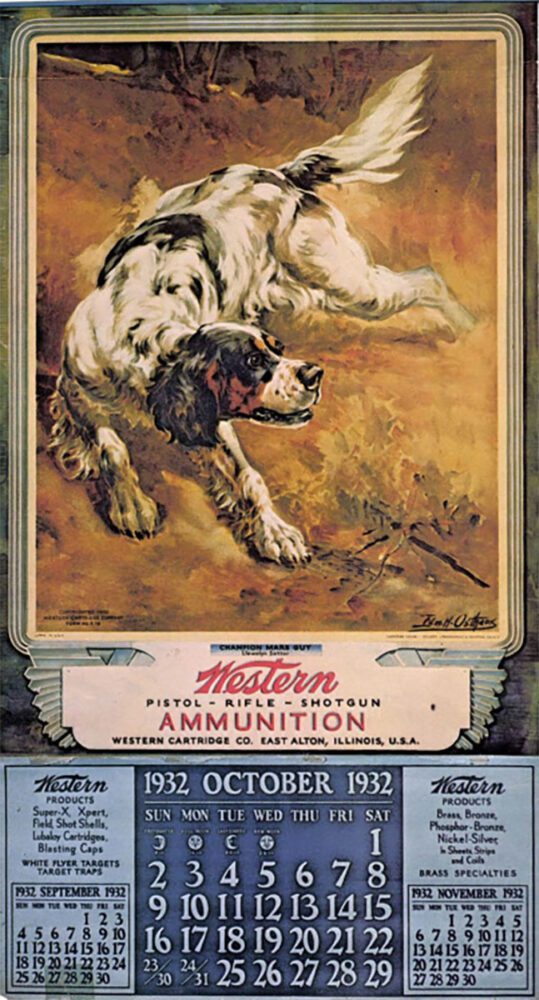
Western’s 1932 calendar showed Edmund Osthaus’ turn-of-the-century painting of a champion Llewellyn setter.
The earliest sporting art calendars and posters were printed only in black ink on white paper. About 1888 different colors of ink were added, paving the way for the reproduction of full color scenes rendered by famous wildlife artists of the period. Many of these had gained wide reputations for their work both at home and abroad before being commissioned to paint calendars.
Among these was Frederick Remington, who went west as a young man and later dominated the field of sporting art in the 20th century. He painted the 1892-94 Winchester calendars.
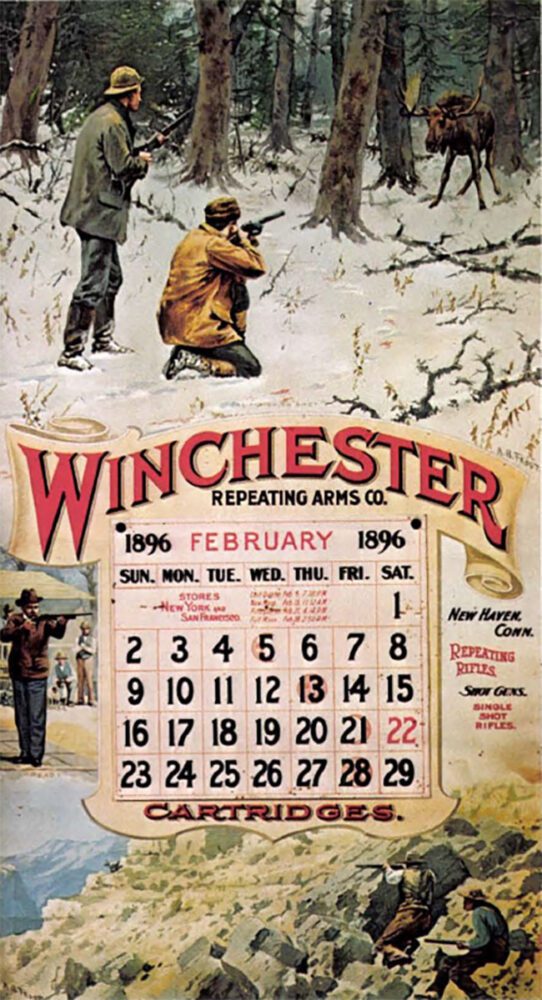
Mars Guy. Winchester’s 1896 calendar was painted by the well-known artist A. B. Frost, and is one of the most valuable in Bill Bramlett’s
collection.
One of the most readily accepted and prolific artists of this era was Arthur B. Frost, whose work appears on the 1895-1901 Winchester calendars. He was once described as “most American of the American artists.” Illustrator for more than100 books and countless magazine articles, Frost is best known for his illustrations of the tales of Uncle Remus and Brer Rabbit by Joel Chandler Harris. In addition to his work with this author, Frost furnished illustrations for Mark Twain’s Tom Sawyer, as well as books by Charles Dickens, Lewis Carroll and Theodore Roosevelt. Sporting scenes by Frost were very popular around the turn of the century and his famous portfolio, Shooting Pictures, published in 1895, is highly sought after by collectors today.
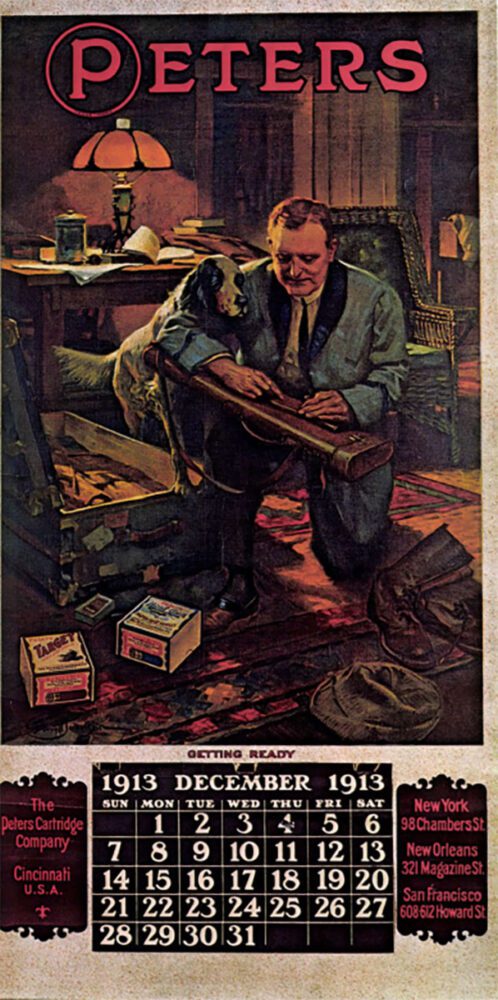
C. Everett Johnson ‘s
“Getting Ready” adorned Peters ‘1913 calendar.
One common trait shared by almost all of the sporting artists of this period was their love of hunting and being in the great outdoors. This was especially true of the German-born artist Edmund Osthaus, who when he died in 1928 was at his Florida shooting lodge, gun in hand and sketchbook by his side. Osthaus was famous for his portraits of dogs, specializing in pictures of champion pointers and Llewellyn-type setters. During the early 1900s, he produced a series of paintings for the DuPont Powder Company calendars and posters.
L. C. Wyeth, father of Andrew Wyeth, one of America’s best-known artists, is remembered well for his thrilling illustrations which brought to life such books as Treasure Island, Robin Hood and The Last of the Mohicans. A student of the master illustrator, Howard Pyle, Wyeth became well known for his illustrations and paintings depicting Indians, trappers and cowboys of the far west.
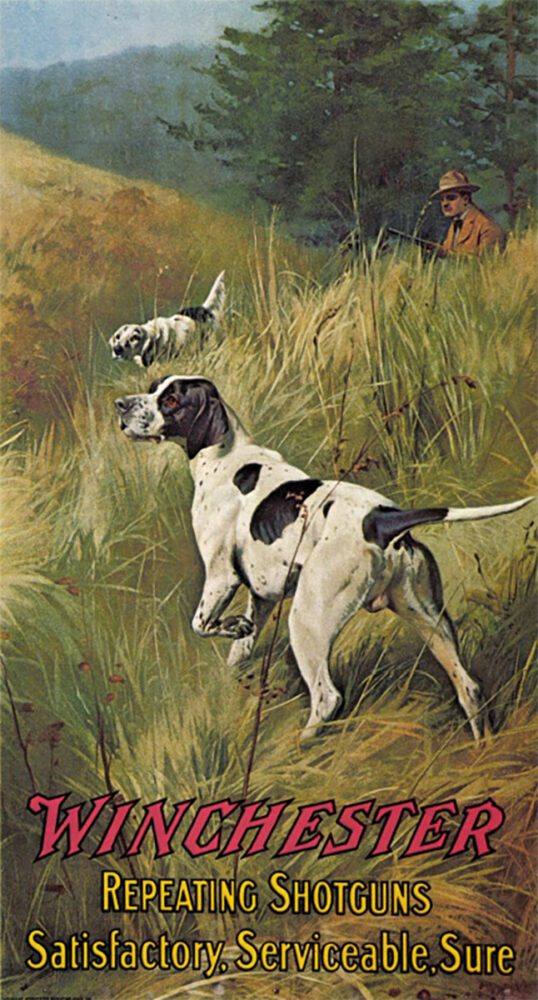
Gustav Muss-Arnolt painted the 1913 poster advertising a Winchester shotgun that is still being made.
Another widely recognized artist and illustrator whose work adorned the calendars and posters of the Ithaca Gun Company was Louis A. Fuertes, one of the world’s leading painters of birds. In addition to his talent as an artist, he was also recognized as a leading naturalist and ornithologist who wrote extensively on birds and their habits.
Lynn Bogue Hunt, considered by some to be “the Audubon of his time, ” was another of the calendar artists whose work was profuse. A close friend of Ernest Hemingway, Hunt illustrated some of the author’s magazine articles and served as staff artist for the American Museum of Natural History and Field and Stream magazine.
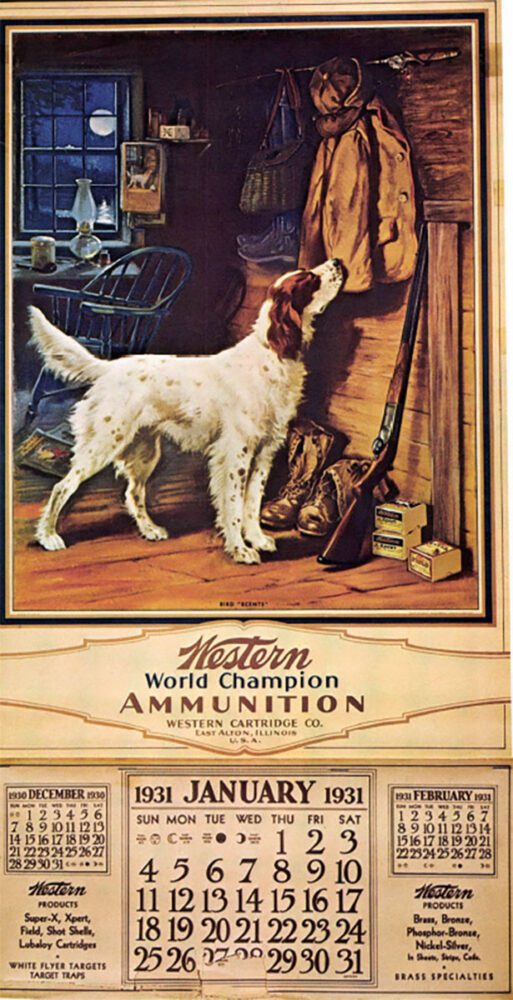
The unknown artist of Western’s 1931 calendar reproduced the calendar itself in his painting.
These were only a few of the many artists who contributed to the give-away calendar and poster art produced by some 30 different arms and ammunition companies around the turn of the century. With names like Union Metallic Cartridge Company, Infallible Powder, Lefever Arms and Robin Hood Ammunition, only the oldest and most avid outdoorsmen will remember buying their products.
In addition to these better-known artists, Bramlett noted that there were many others whose work appears on calendars, but about whom little information is available. “Many of these, such as G. Muss-Arnolt, C. Everett Johnson, PhiIip R. Goodwin, William Eaton and W R. Leigh produced excellent work, but were not as well known. Some of them may have received little pay for their work or traded their paintings for a gun or something,” Bramlett said.
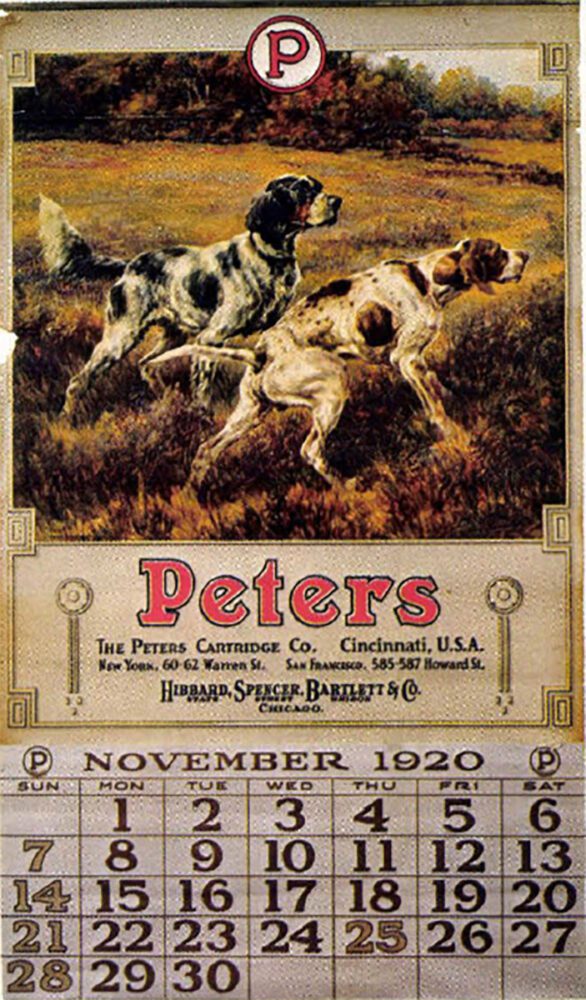
Edmund Osthaus’ art for Peters’1920 calendar exemplifies his attention to detail and expertise in
animal anatomy and movement.
Old timers will recall the portfolios and prints of some of the wildlife artists being offered for sale through early outdoor magazines such as The National Sportsman, The American Field, Hunting and Fishing and Hunter-Trader-Trapper.
Another arms advertising item which Bramlett collects is the envelope produced by various companies with different models of their guns portrayed on them. “Many of these I have acquired from stamp collectors who buy them for the stamps but don’t need the envelope.”
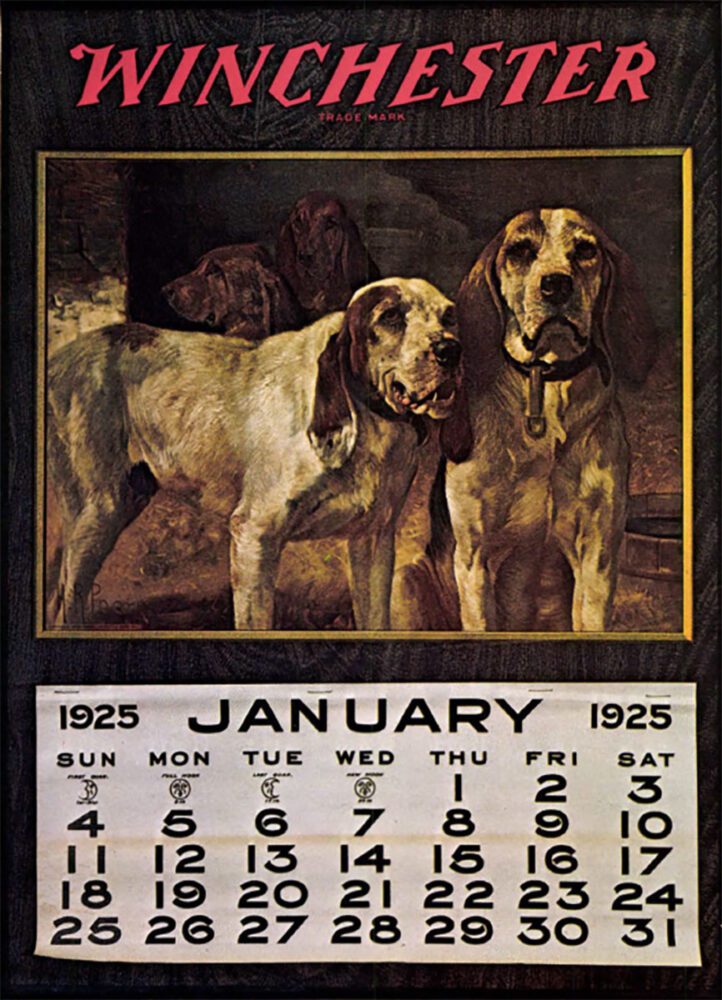
Winchester’s 1925 calendar used
artwork originally painted by H. B.
Poore in 1907 for use as a large
advertising sign.
One such envelope was sent from a Columbia firm called Lorick and Lowrance; it is dated November14, 1900. Bramlett surmises that the firm was either a hardware or general merchandise store which sold guns. He has found no information to confirm it thus far, however.
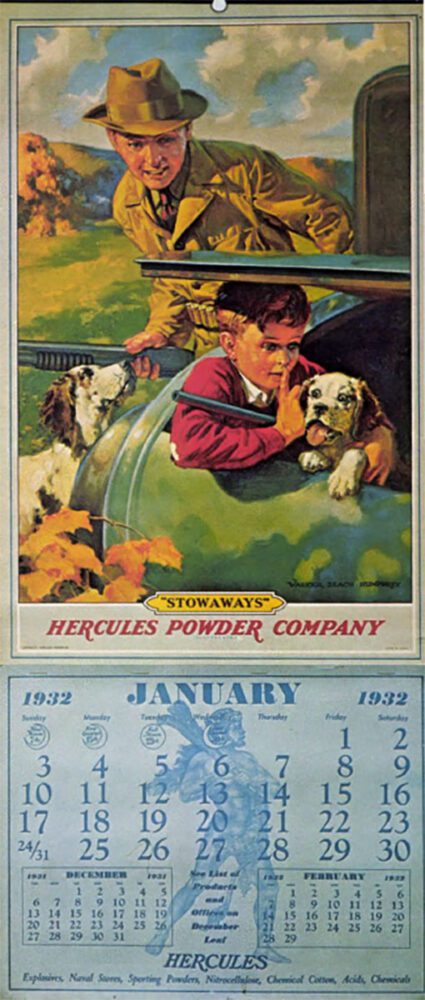
Walter Beach Humphreys’ “Stowaways ” decorated Hercules Powder Company’s 1932 calendar.
Why did he become interested in collecting such memorabilia? “I always wanted to collect guns,” he explained. “My father collected Winchester rifles, but today it is such an expensive hobby that I turned to the next best thing. ” Despite the cost, however, Bramlett still collects and shows the guns themselves, often setting up a period display with a few of his calendars, posters and envelopes at gun shows he enters.
As one looks over the collection, it brings the mind a by-gone era when the general store was a youngster’s wishing well; when men and boys alike paused on the street to gaze at that shiny new shotgun in the window, or ventured inside or a winter’s day to warm their hands at the potbellied stove and share a hunting story.
It was good times for some, hard times for others. As the tales were told of shots barely missed, of game that proved a worthy match, or strange occurrences in woods and fields, the calendar was on the wall nearby ticking off the days, providing illustration for tales of the past.
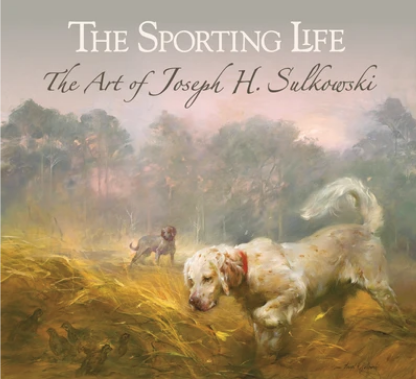 The Sporting Life is a celebration of gundogs and horses, hunting and fishing as expressed through the rich and exuberant paintings of Joseph Sulkowski. Buy Now
The Sporting Life is a celebration of gundogs and horses, hunting and fishing as expressed through the rich and exuberant paintings of Joseph Sulkowski. Buy Now

